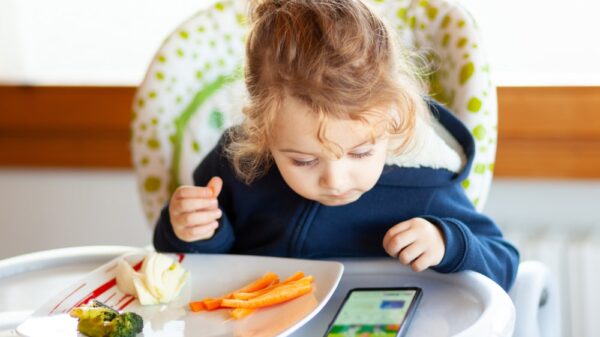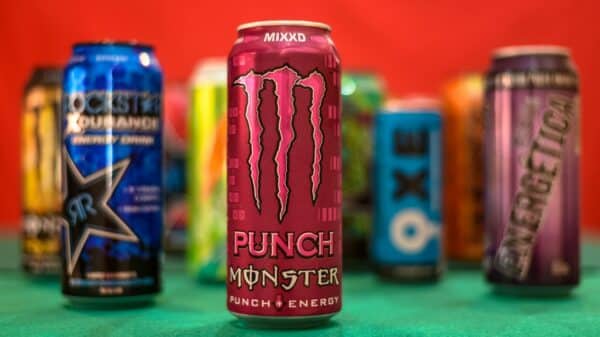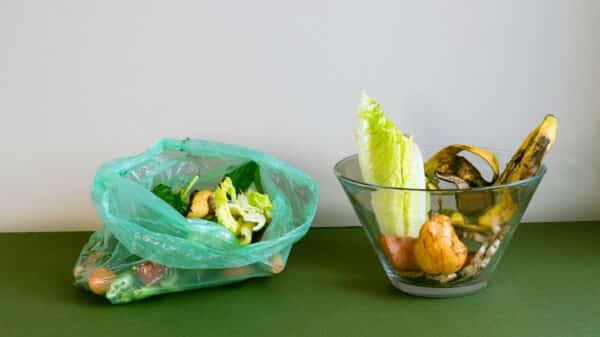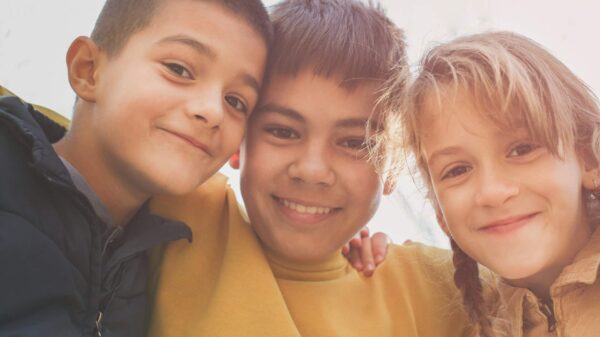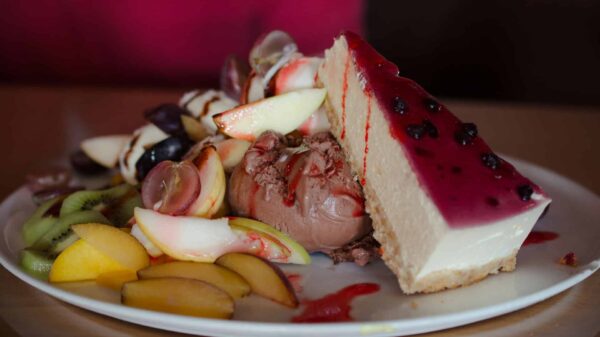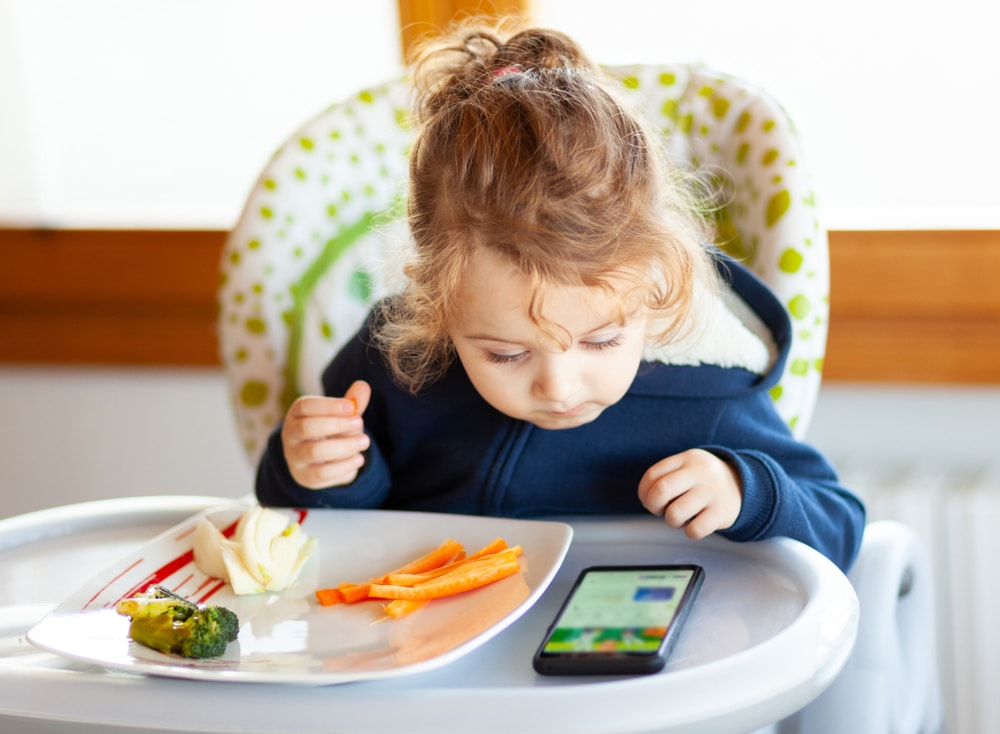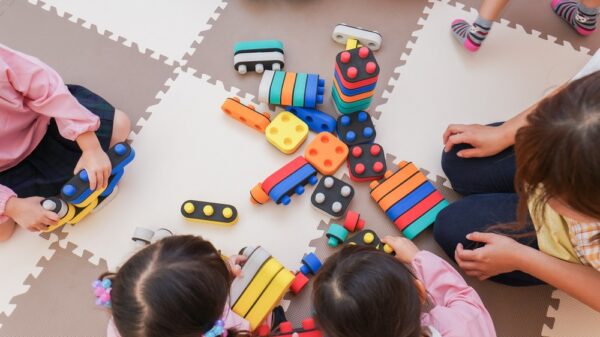Toddlers possess an extraordinary knack for observing and expressing their surroundings, often leaving parents feeling entertained, baffled, or a mix of both. Creative phrases like “raspberry Christmas trees” for Rice Krispie treats and referring to a peppermint as a “hippo” are just a few examples of their imaginative word associations, which resemble intriguing puzzles waiting to be deciphered.
Victoria, a former elementary school teacher who is now a stay-at-home mom, recently posted a charming TikTok video featuring her 16-month-old daughter. In the clip, as the toddler flips through an ABC book, she confidently points to an illustration of a peppermint and declares it a “hippo.”
Initially confused, Victoria soon saw the rationale: the peppermint was placed beside the letter “G” for “gingerbread.” This moment exemplifies the distinct way toddlers view the world, connecting visual elements with their emerging language skills.
So, what goes on in their imaginative minds during these mix-ups? How can parents decode—and celebrate—their child’s developing linguistic abilities? Let’s delve into the science and joy behind toddler word associations.
Why Toddlers Mix Things Up
During a phase of cognitive growth filled with curiosity, toddlers’ brains are constantly forming connections between words, objects, and concepts. While their associations may not always align with adult reasoning, they reflect a unique way of processing information.
1. Cognitive Associations At just 16 months, toddlers rely heavily on contexts and patterns to make sense of their environment. In fact, Victoria’s daughter wasn’t entirely mistaken; the peppermint’s placement next to gingerbread helped her arrive at that conclusion. It’s typical for toddlers to label all four-legged animals as “dog” or refer to the moon simply as “light.”
2. Emotional and Visual Cues Toddlers often connect words with the emotions or images related to their experiences. As one commenter noted on Victoria’s post:
“My toddler called airplanes ‘bee’ because of the buzzing sound.” — @Cristal Quinn Similarly, they might describe a cake as “happy” due to its association with the “Happy Birthday” song. These connections illustrate how emotional and sensory experiences shape their early vocabulary.
3. Phonetic Simplicity When faced with complex words, toddlers frequently simplify them. For instance, an “octopus” might become “applepus,” while “backpacks” could turn into “packpacks.” This simplification reflects their method of managing language as they learn.
Decoding Your Toddler’s Logic
Understanding why your toddler labels lightbulbs as “ideas” or refers to Chewbacca as “Mommy” can feel like solving a mystery. Here are some strategies to uncover their reasoning:
- Trace Their Inspiration: Reflect on recent books, toys, or experiences. Many word mix-ups arise from frequent exposure; for example, a child might mistakenly call a recycling symbol a “garbage truck” because of its likeness to the bins.
- Ask Gentle Questions: Use prompts like “What does it remind you of?” or “Where did you see this before?” This can shed light on their thought processes.
- Celebrate Their Effort: Even if the connections seem unusual, acknowledge them as signs of your toddler’s cognitive development. Encourage their exploration while gently steering them toward accurate terms.
Expert Insights: What the Science Says
Research suggests that engaging toddlers in discussions about emotions during storytime can notably enhance their language development and emotional awareness. Studies indicate that toddlers who are prompted to think about characters’ feelings are more prone to exhibit sharing and helping behaviors.
Dr. Eileen Kennedy-Moore, a clinical psychologist and parenting expert, points out that this interactive method strengthens the ties between words, visuals, and emotions, thus fostering cognitive and social growth.
By incorporating discussions about emotions during reading sessions, parents can turn storytime into an invaluable opportunity to nurture empathy and communication skills.
Additionally, reading aloud plays a key role in shaping toddlers’ vocabulary. The Child Mind Institute emphasizes that pointing out images and naming objects during reading sessions helps toddlers solidify the connections between words and meanings. However, parents should avoid overly abstract representations, like using a peppermint to illustrate “gingerbread.”
How Parents Can Support Language Development
Encouraging your toddler’s playful use of language can boost their linguistic skills and enhance your bond. Here are some effective strategies:
- Read Often and Interactively: Opt for books with vivid images and simple text. Get in the habit of pointing out objects by saying, “Look, that’s a giraffe!” This strengthens the ties between words and visuals.
- Model Patience and Curiosity: Celebrate their creative thinking. For instance, if your toddler calls a cat “hi” because they associate the greeting with the animal, respond positively: “What a smart connection! This is a cat, and we say hi to it.”
- Encourage Exploration: Provide toys, books, and activities that introduce them to new words and concepts. This will help broaden their vocabulary and reduce the likelihood of ongoing mix-ups.
Celebrating the Whimsy of Toddler Logic
While these instances of toddler reasoning can be highly entertaining, they bear substantial significance. Each mix-up provides insight into how your child is learning to communicate and connect with their surroundings.
Who wouldn’t smile at a toddler calling Rice Krispie treats “raspberry Christmas trees” or mistaking a snowman for “Mommy”? These charming quirks serve as reminders to take a moment, appreciate the chaos, and celebrate the small achievements.
Conclusion: Behind Every Mix-Up is a Growing Mind
Victoria’s daughter, in her peppermint mix-up, didn’t just present a funny story; she offered a glimpse into the wonder of early childhood. Whether misidentifying a gingerbread decoration as a “hippo” or labeling a cake as “happy,” these occurrences illustrate how our little ones are learning and discovering.
So, whenever your toddler insists that a dog is a cow or identifies their cereal as “round crunchies,” pause to enjoy the humor, decode their thought process, and appreciate their developing minds. These cherished years are filled with laughter, exploration, and endless love.
What’s the most amusing thing your toddler has ever said? We invite you to share your stories with us on social media—we’d love to hear from you!
Image Source: Antonio Gravante / Shutterstock

